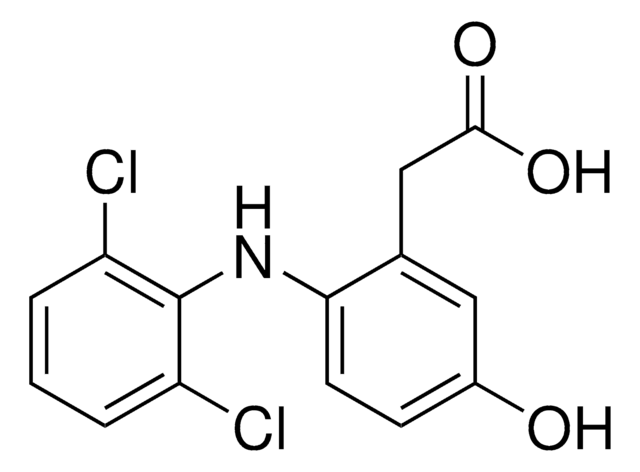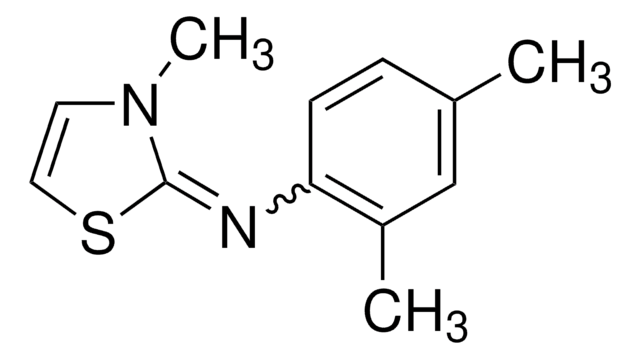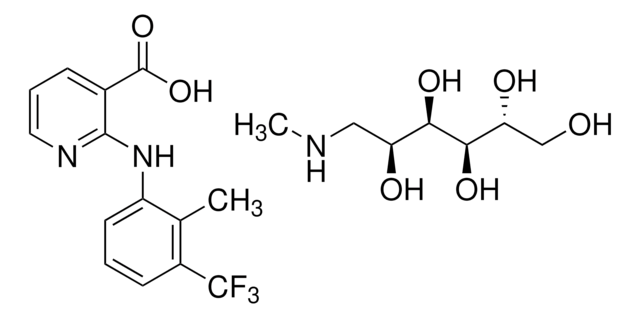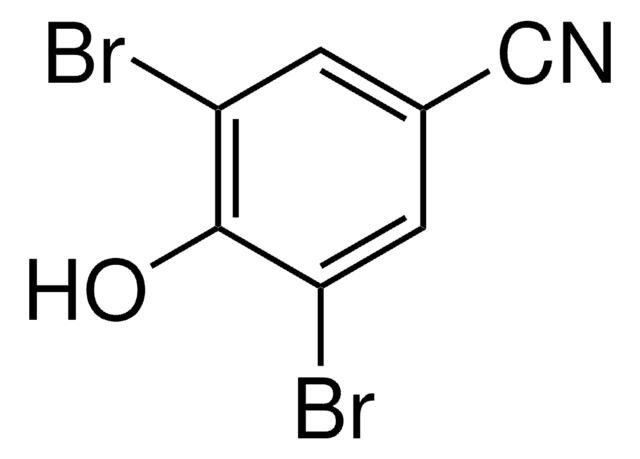45357
Bromopropylate
PESTANAL®, analytical standard
Synonim(y):
Isopropyl 4,4′-dibromobenzilate, Phenisobromolate
About This Item
Polecane produkty
klasa czystości
analytical standard
Poziom jakości
linia produktu
PESTANAL®
okres trwałości
limited shelf life, expiry date on the label
metody
HPLC: suitable
gas chromatography (GC): suitable
Zastosowanie
agriculture
environmental
format
neat
ciąg SMILES
CC(C)OC(=O)C(O)(c1ccc(Br)cc1)c2ccc(Br)cc2
InChI
1S/C17H16Br2O3/c1-11(2)22-16(20)17(21,12-3-7-14(18)8-4-12)13-5-9-15(19)10-6-13/h3-11,21H,1-2H3
Klucz InChI
FOANIXZHAMJWOI-UHFFFAOYSA-N
Szukasz podobnych produktów? Odwiedź Przewodnik dotyczący porównywania produktów
Powiązane kategorie
Zastosowanie
Informacje prawne
Hasło ostrzegawcze
Warning
Zwroty wskazujące rodzaj zagrożenia
Zwroty wskazujące środki ostrożności
Klasyfikacja zagrożeń
Aquatic Acute 1 - Aquatic Chronic 1
Kod klasy składowania
11 - Combustible Solids
Klasa zagrożenia wodnego (WGK)
WGK 3
Temperatura zapłonu (°F)
Not applicable
Temperatura zapłonu (°C)
Not applicable
Środki ochrony indywidualnej
dust mask type N95 (US), Eyeshields, Gloves
Choose from one of the most recent versions:
Masz już ten produkt?
Dokumenty związane z niedawno zakupionymi produktami zostały zamieszczone w Bibliotece dokumentów.
Protokoły
Test your food for fipronil contamination using our analytical standards, certified reference materials, solvents, and columns for analysis.
Nasz zespół naukowców ma doświadczenie we wszystkich obszarach badań, w tym w naukach przyrodniczych, materiałoznawstwie, syntezie chemicznej, chromatografii, analityce i wielu innych dziedzinach.
Skontaktuj się z zespołem ds. pomocy technicznej









